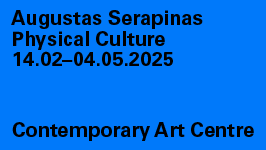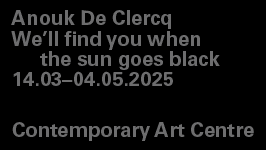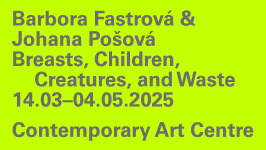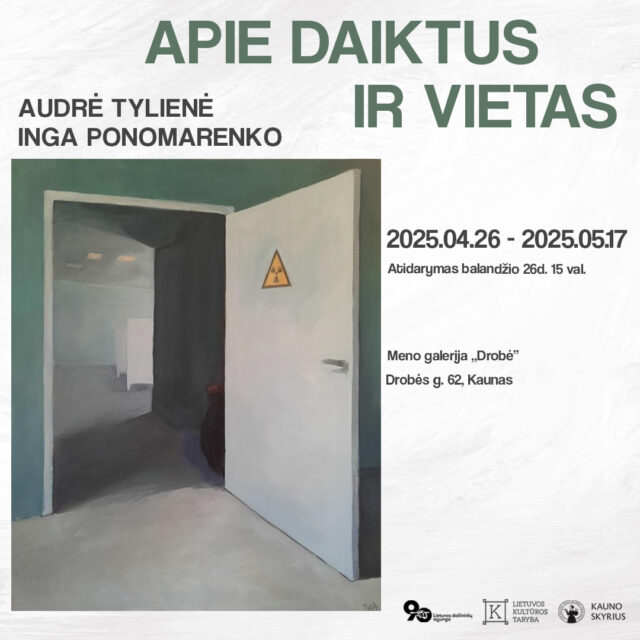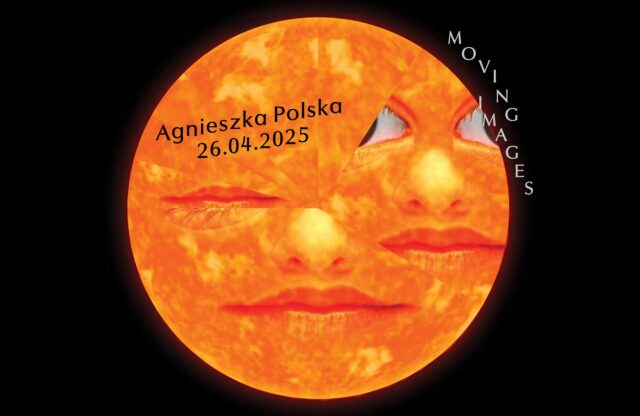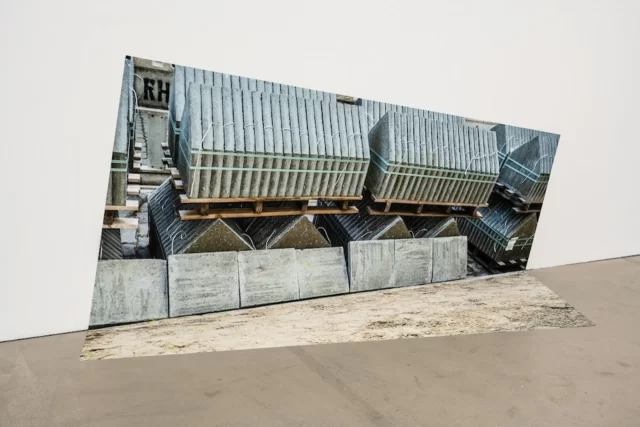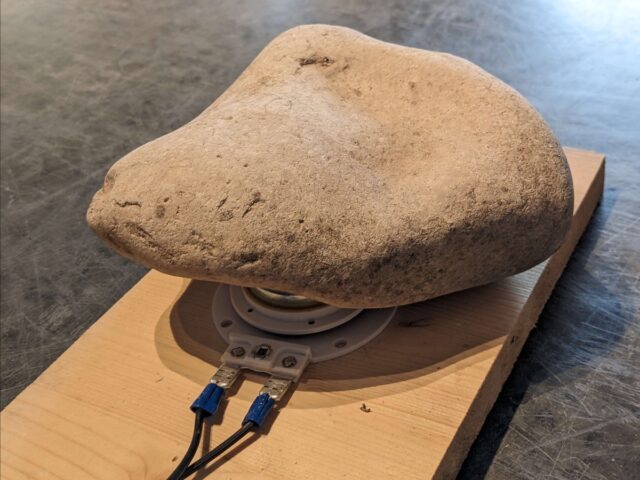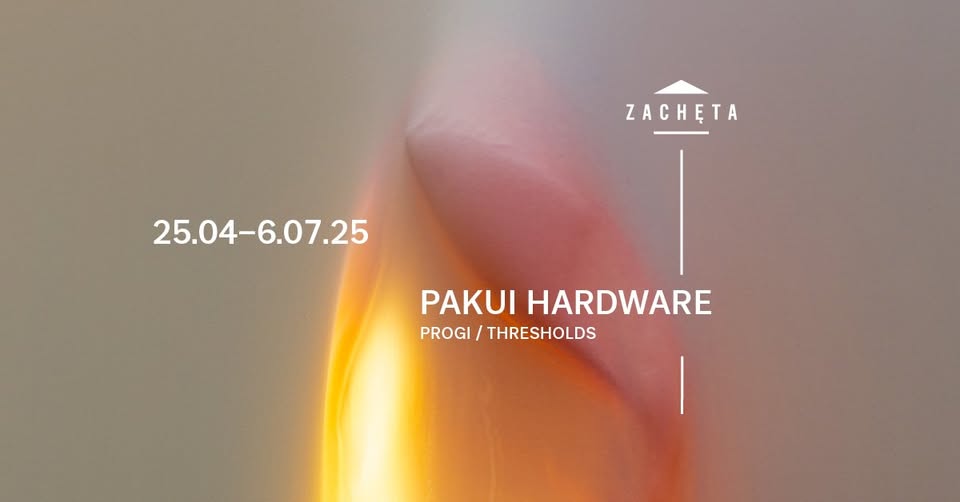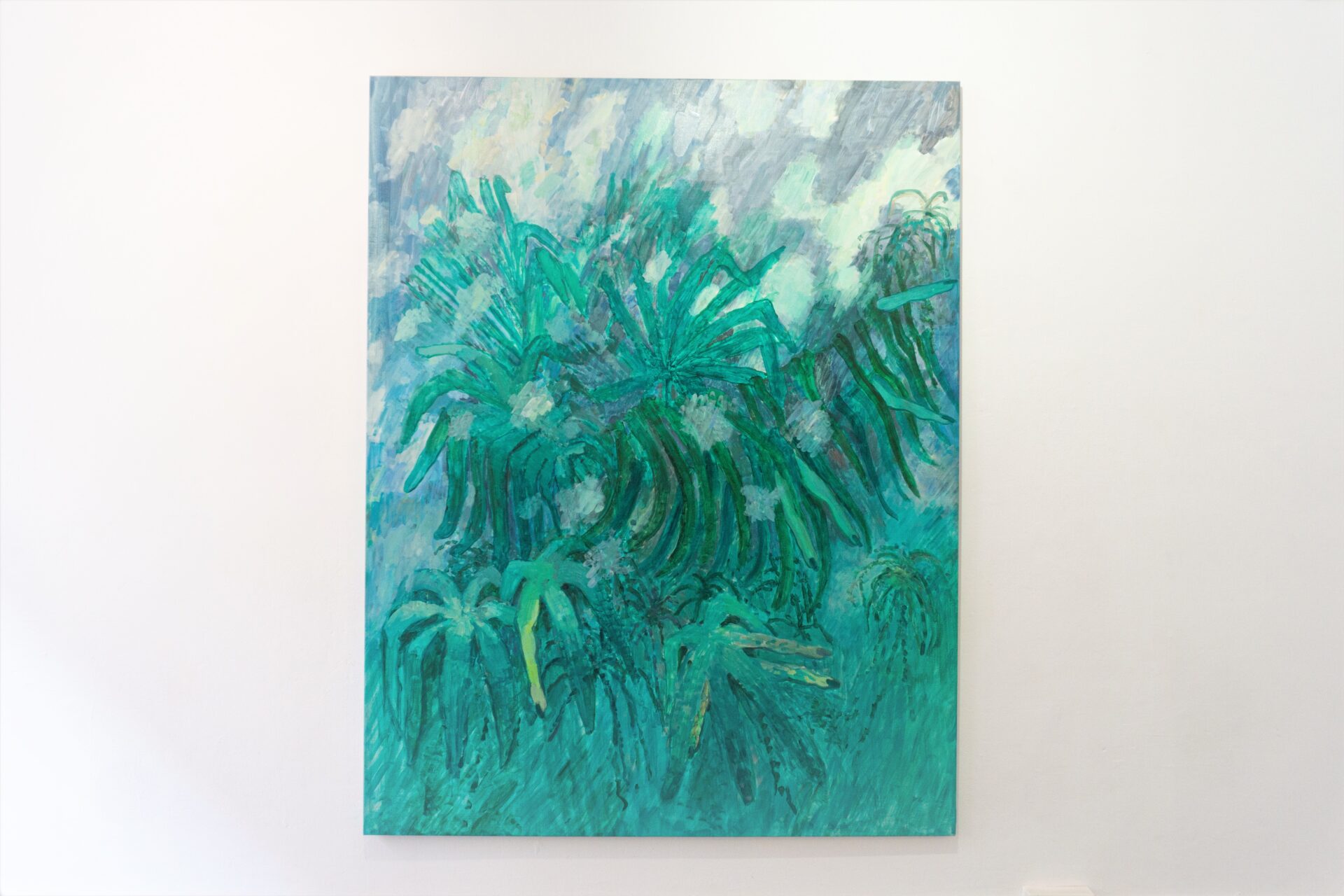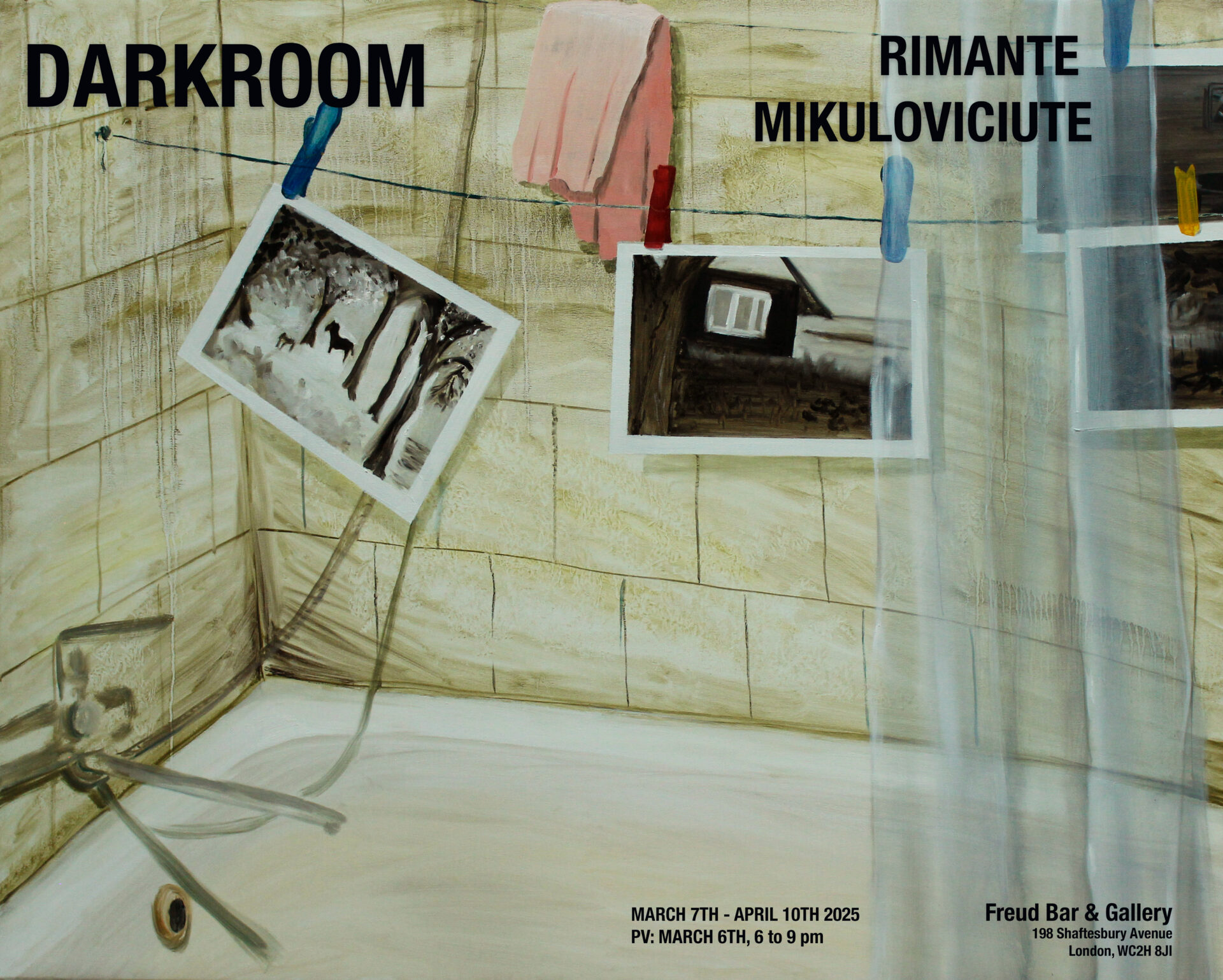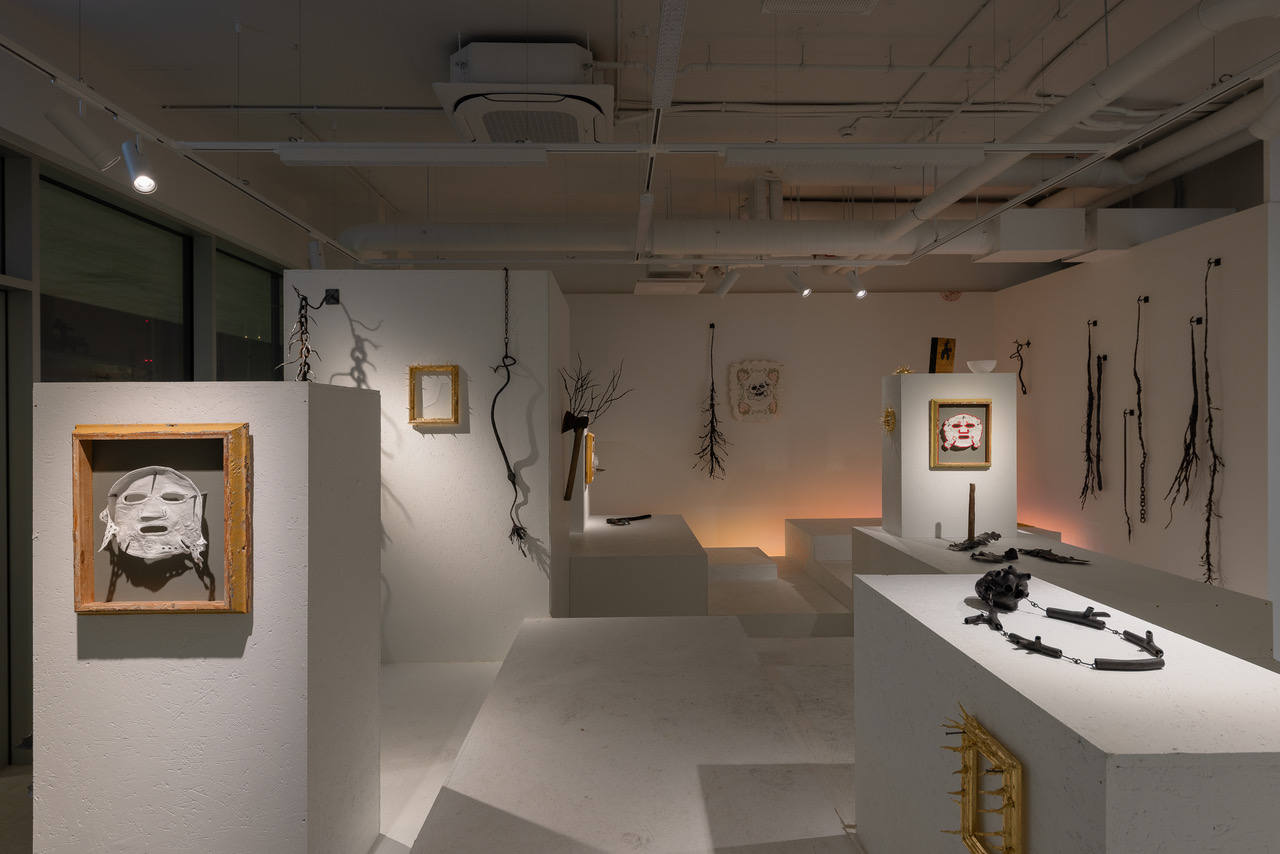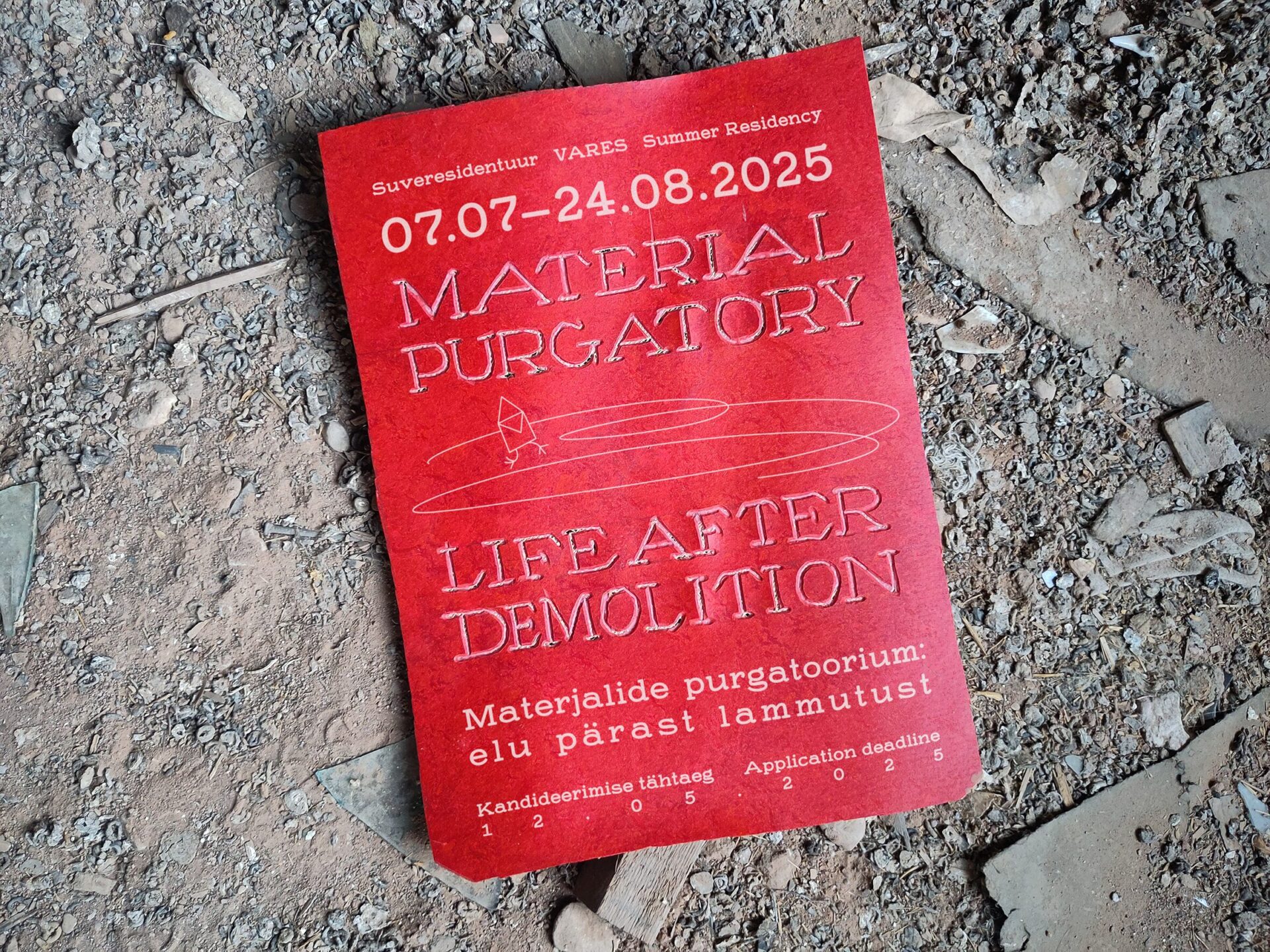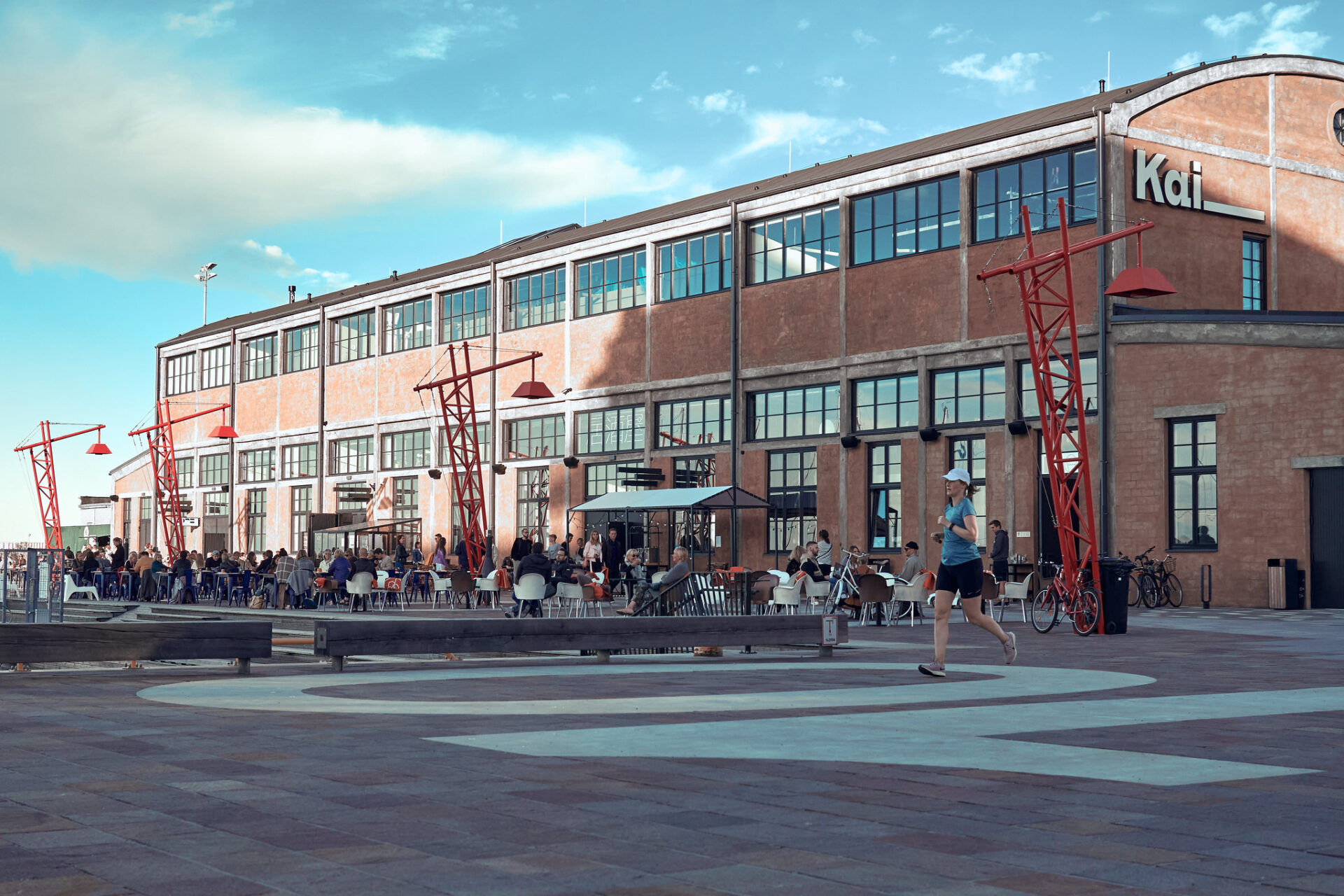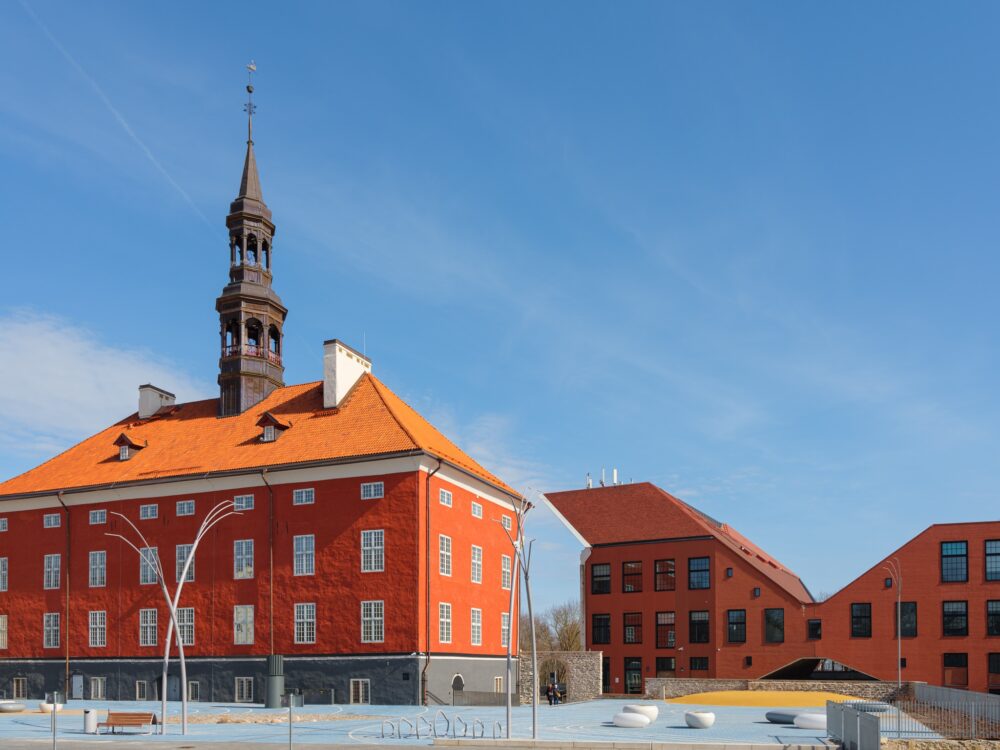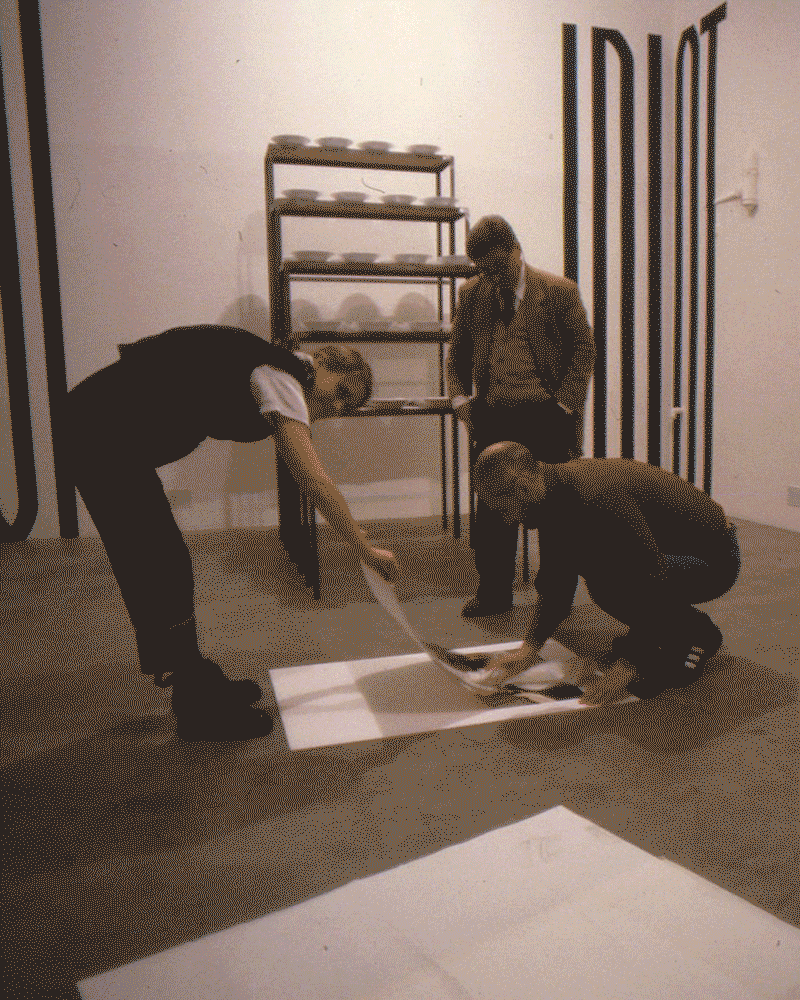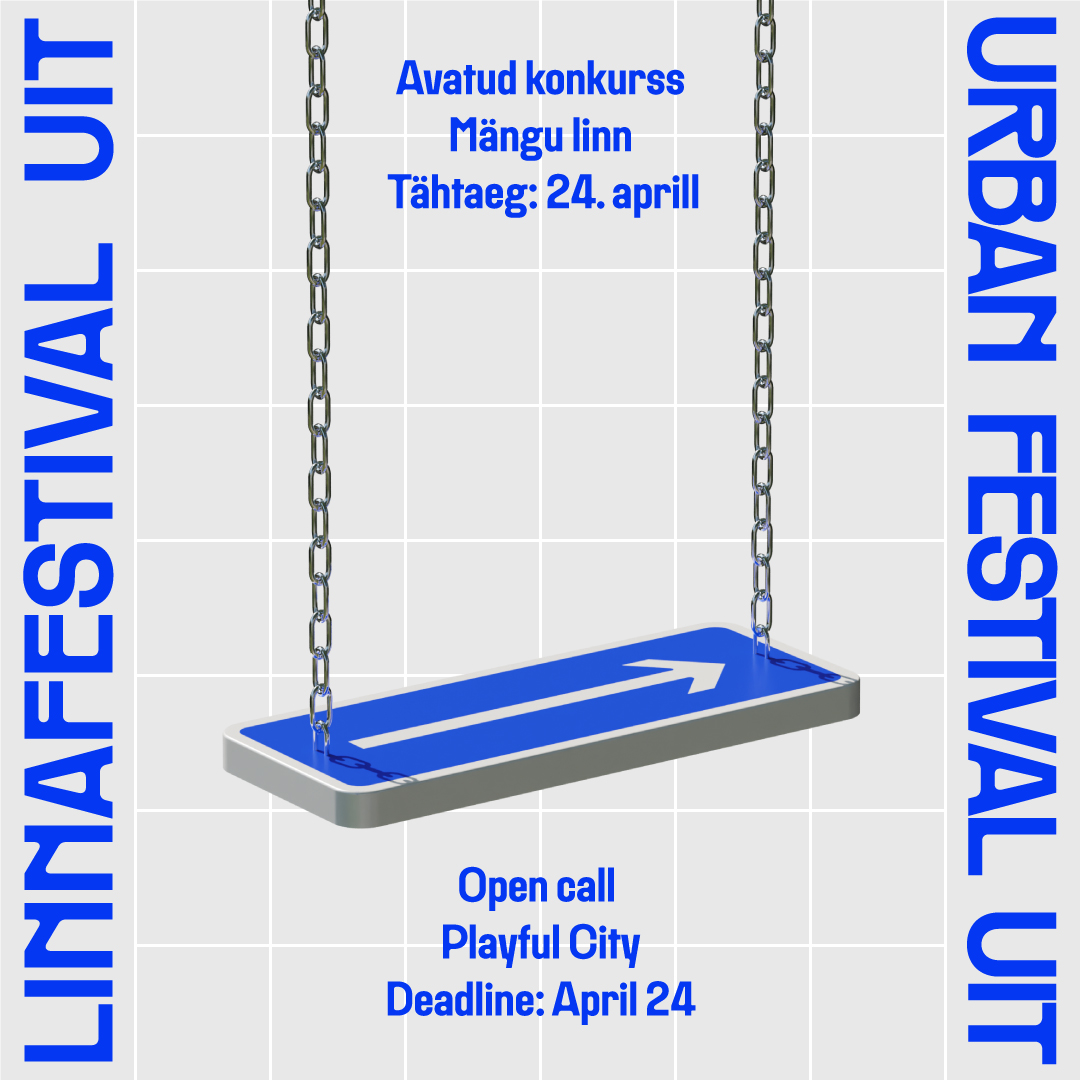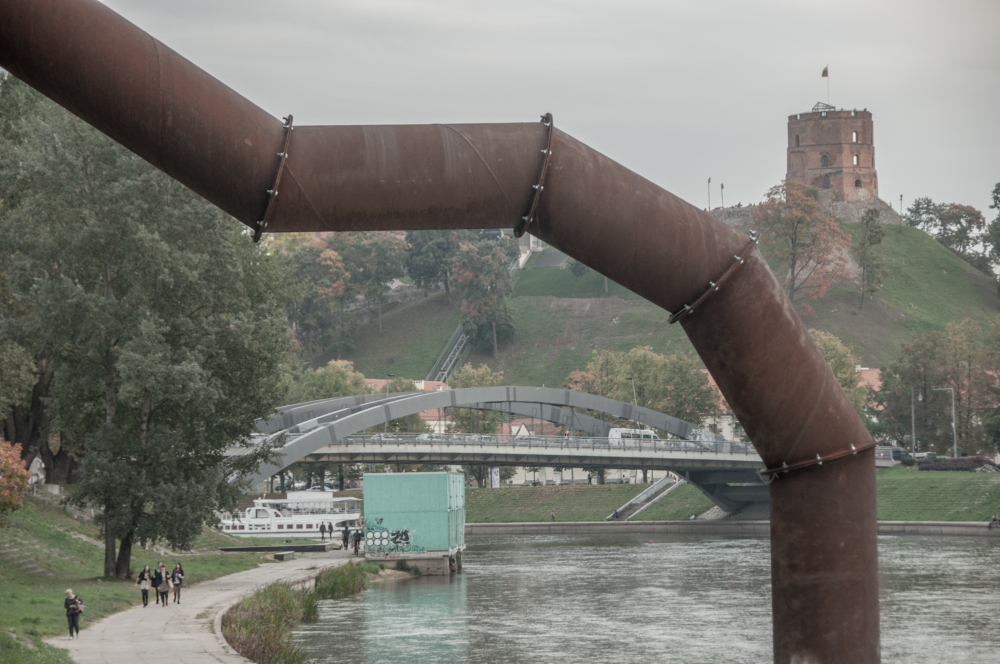
Vladas Urbanavičius, ‘The Embankment Arch’, Vilnius, Lithuania. The sculpture has been put into place in January 2009 within the framework of the public places humanisation programme of “Vilnius – European Capital Of Culture 2009” aimed at contemporary interpretation of the city’s open space. Other two sculptures realized were Robertas Antinis’ ‘Half-hill’ and Mindaugas Navakas’ ‘Double floor’. (Photograph by Julius Balčikonis)
There it is — an impenetrable and enigmatic intruder, immune to a commanding recognizability of its surroundings, immune to the expectations of puzzled spectators. It is simply out there in all its presence and givenness, inviting the gaze and returning it dispassionately. By remaining opaque to all the enquiries and refusing to reveal its purpose, it somehow withdraws from an everyday arrangement of things. Even more: it withdraws from causality itself by withholding the reason of being there in the first place. Devoid of both reason and a place within the order of things, it disturbs the fabric of reality as a ‘non-thing’ — i.e., as a lack of a recognizable ‘something.’
Ever since its appearance it has been a target for intense disputes during which, as far as public debates on contemporary art are concerned, citizens found themselves polarized in an unprecedented way. The social dimension of this disturbance has become so pronounced recently, that it galvanized many public intellectuals into action and, following suit, I am opening my own dossier which I chose to categorize as a ‘monolith case.’ Reasons for such choice of name will become apparent by the end of this text, just as my train of thought will have ran its course.
However, here I must immediately offer a disclaimer: this train of thought will never reach its destination — this very ‘thing out there’; it can only approach it indefinitely, just as a curve (say, a curve of rational function) approaches its asymptote without arriving at the point of intersection. Nonetheless, instead of finding such unresolvability useless or tautological, this infinite movement towards the ‘thing’ might offer a certain tension which, perhaps, will prove to be more revealing than any possible interpretation.
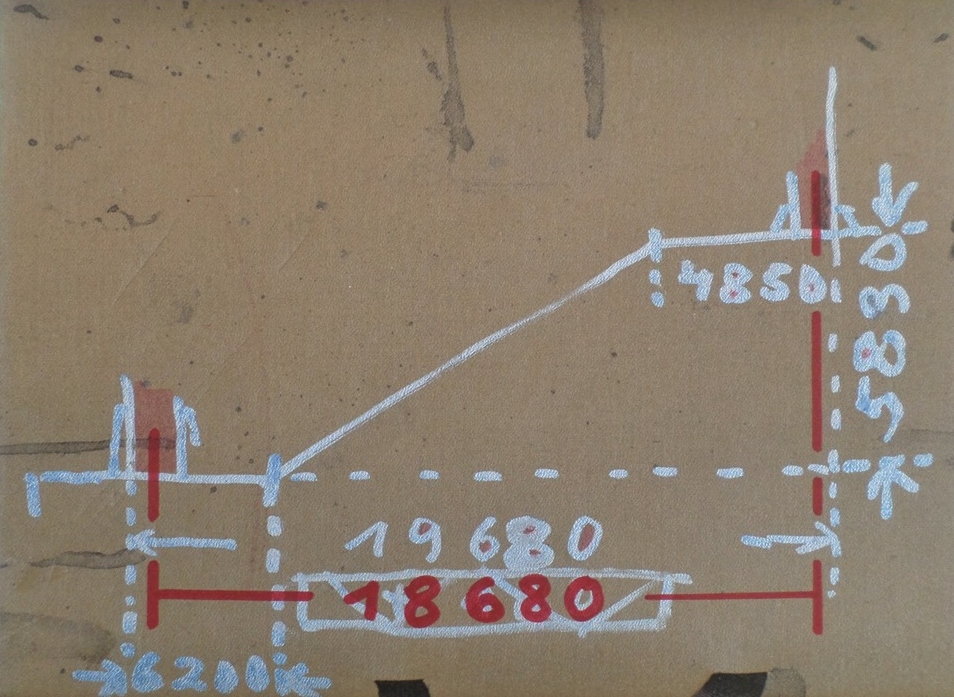
The measurements of the embankment taken by Vladas Urbanavičius
It is a bit ironic that at the epicenter of this ongoing public turmoil we find a chunky pipe which seems to be simply standing there: rusty, bare, featureless, exposed, without any explanation — a continuous ‘event of the thing,’ an event that citizens of Vilnius find themselves caught in. Something must have happened (or, something is continuously happening) to cause such a display of public interest, and it cannot be simply boiled down to the questions of aesthetics or ethical aspects of ‘money well spent.’ The thing is present — and so is the audience. The thing which is too vacant, too irreducible, too blank to be anything but a screen for social cinema to be projected onto it. Wait, thing as a screen? This calls for an elaboration.
Screen as such happens to be a dedicated space for negotiations between the the whole plurality of signs, and here it is impossible to avoid making an analogy with the cinematic screen. If we abstract ourselves from socio-political conditions of cinema and allow the screen to emerge as a subject, then it will become evident that during its whole genealogy the physical screen has retained the quality of tabula rasa by remaining a medium indifferent to its content: it took both propaganda reels and radical avant-garde equally well, so to speak. What is particularly interesting here, is that at the level of medium, as an always-already realized condition which allows the kaleidoscope of contents to unleash its conceptual and ideological variety, lies the idea of a democratic cohabitation, and the screen functions as a condition of it. Instead of imposing a specific content, medium always appears to be open to a whole plethora of possibilities — it is there as an opening, a gap to be constantly filled and refilled. In other words, we can no longer be driven by the necessity of some particular content (the right content, the right interpretation), given that we have already acknowledged the necessity of the screen itself — necessity which, in some peculiar way, allows us to keep the ghost of democratic cohabitation in our sight. However, problems arise when the signs occupy the screen in order to own it by imposing a definite signification (“this is what it means, and no other meanings are permitted”) or consume it by turning it into a ‘useful’ tool with a clearly defined function, or even dispose of it because the screen reveals ‘too much.’ Now, what does it have to do with The Embankment Arch and monoliths?
As far as ‘traditional aesthetics’ is concerned, in order to be what it is, the screen needs to disappear from perception and offer its surface to the effects of a projection, and it is precisely what The Embankment Arch refuses to do. Irreducible neither to ideologically or logistically necessary function nor to its ‘aesthetically pleasing’ effects, The Arch emerges as some sort of a rupture — hernia, or hemorrhoid — a sign of repression and tension, protruding like an intestine through the abdominal wall of a riverbed. This refusal to hide behind the ‘pleasant’ recognizability is catalyzing a whole torrent of events, discussions, petitions((http://www.e-peticija.lt/peticija/182/del-skulpturos-krantines-arka-perkelimo)), political initiatives, debates about artistic value, arguments about the financial and cultural conditions of sculpture’s coming into being, as well as arguments for the necessity of its disappearance — all this ‘cinema’ is projected onto this singular and simple object. During the course of fierce arguments and commotion, all this plurality of events condensed into something that has been yet-to-come when The Arch appeared in the spotlight for the first time: it all became its content in the form of stories, metaphors, myths, speculations, interpretations, explanations, prohibitions and petitions. As time passed by, something which at the very beginning was “just a rusty pipe” has acquired its missing artistic materiality, which turned out to be a social one. However the question is, what does this social materiality reveal?
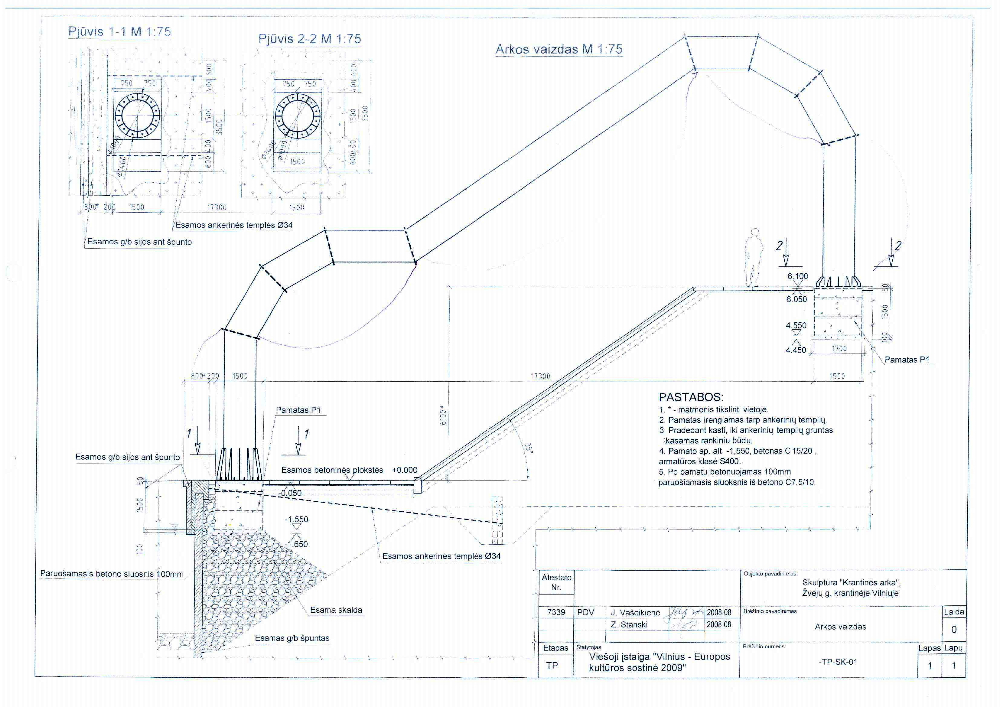
Engineering drawing of ‘The Embankment Arch’ by J. Vašeikienė and Z. Stanski
Here I would like to introduce the concept of ‘monolith,’ and I am inviting it as a ready-made metaphor from Stanley Kubrick’s 2001: Space Odyssey — i.e., monolith as an object able to disturb and reveal. Without clinging to the particularities of the narrative of this epic movie, I would like to dwell on an idea which is both simple and problematic at the same time, namely that what propels the breakthroughs and makes us human is not so much what we might call ‘natural selection’ nor, for that matter, anything ‘natural’ (familiar, familial, native, national), but the encounter with artificiality (art, technology, technē, alterity, foreignness). Mysterious, unexplainable appearance of a monolith opens up a diastema (gap, disjunction, state of being ‘out of joint’) and the problematic part is, of course, how to accept the unresolvability — the gap between the natural state of events and the artificial intrusion. Kubrick’s observation is quite clear: the gap gets accepted under the conditions of violence.
Generally speaking, isn’t it already obvious that this apparent connection between the disjointedness and violence point to a certain horror vacui — a fear of confronting the possibility of coexistence with the rupture, the anxiety of facing it? In the case of The Embankment Arch, public calls to remove the sculpture seem to be driven by this very violent impulse: avoid the void, negate and repress otherness. On the one hand, such a violent (one would say, politically rightist) mode of conduct gives us a chance to look for an opposite option and open ourselves toward hospitality and welcome the intruder. Hospitality calls for a different mode of conduct — that of suspended violence, tolerance, and acceptance of alterity. On the other hand, hospitality may not be the solution precisely because it is still based on the very same conditions of violence, only in this case violence is temporarily suspended. No wonder that we are usually dealing with the liberal vision of hospitality where the intruder is greeted with politeness and political correctness. However, the problem of a potential return of the repressed/suspended violence in the form of symptom makes hospitality a dubious option: it deprives us of wonder in front of the otherness which is always necessary for the intruder to remain what it is. It would be too easy and too hypocritical to embrace otherness as something already familiar. Being hospitable towards The Arch, for instance, would mean that, perhaps, I am giving it some contemporary, understandable, embraceable meaning which, inevitably, will have to be defended — violently — against other possible meanings. And there is yet another problem which makes such a position slippery: hospitality implies that I welcome the intruder into the place that I own. Under the conditions of hospitality, intruder will thus stay deprived of its place.
In a way, that’s exactly how The Arch seems to reside, officially: ‘out there,’ ‘within the outside,’ cohabiting with the outsiders — graffiti artists, flies, pigeons, writers, junkies, weirdos.
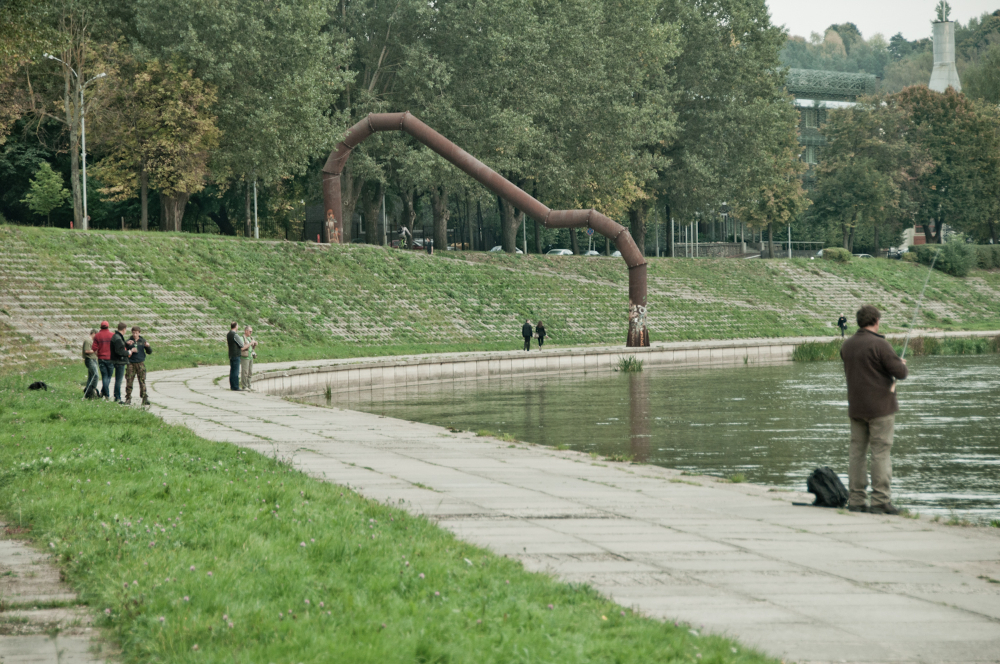
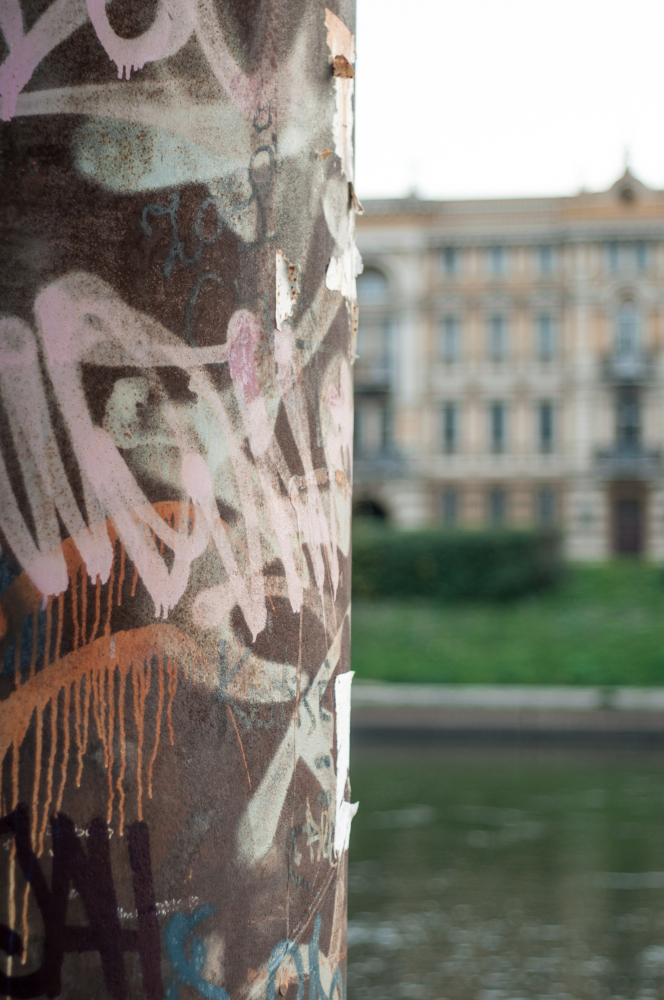
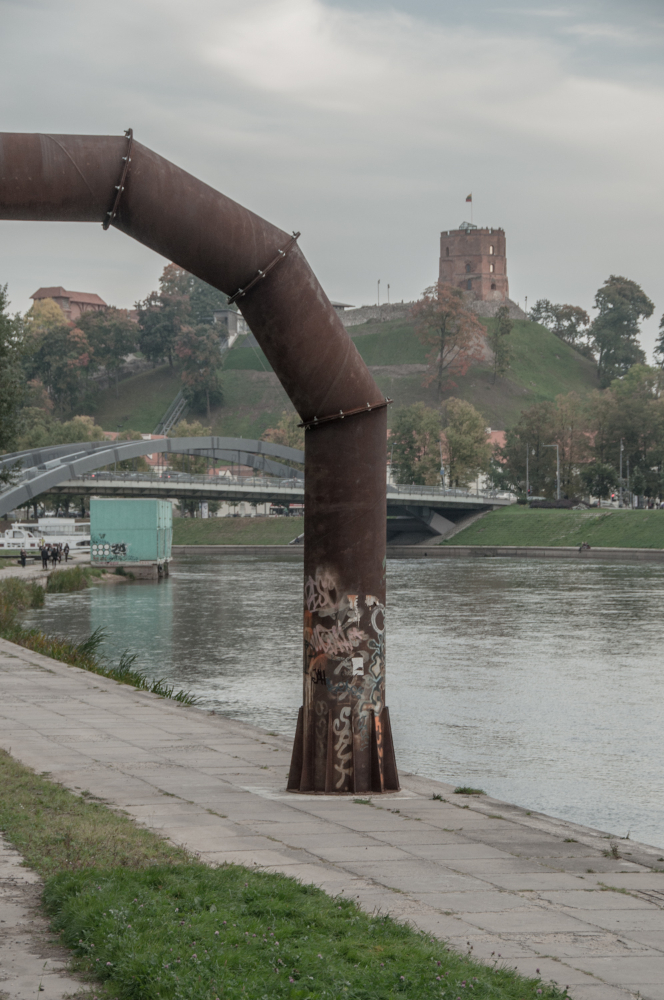
Photographs by Julius Balčikonis


